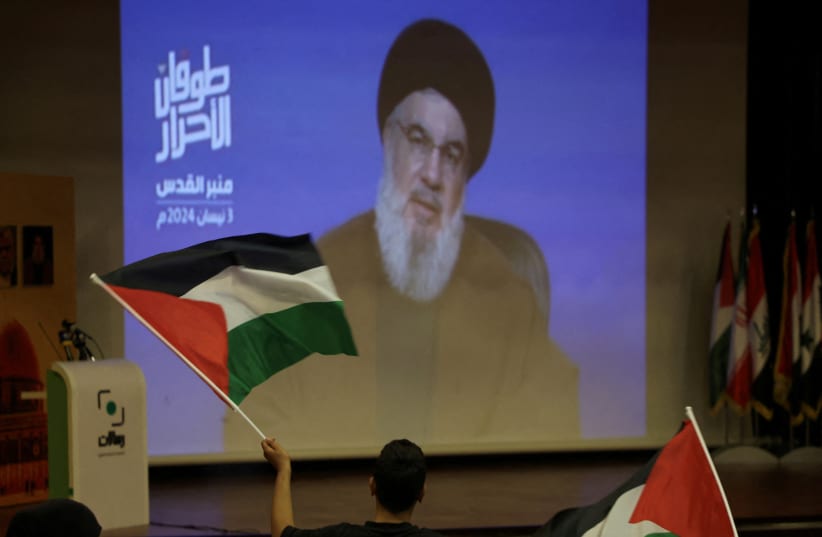What’s been taking place in Israel is not normal. There has not been another country so brutally attacked – on its southern border by Hamas, on its northern border by Hezbollah, and with hundreds of missiles launched over its breadth and width by its arch-enemy Iran, all within a few months.
We are battered, but resilient, as we prepare for Passover next week. There’s still no deal in sight to return the remaining hostages that have been held by Hamas in Gaza since October 7, and it fills us with anxiety and dread.
Likewise, although there are indications that nothing will be implemented until after Passover, Israel will undoubtedly respond in some way to Iran’s unprecedented, barbarous attack on a sovereign nation. That also fills us with anxiety and dread.
The situation on Israel’s northern border should also fill us with trepidation. We are, for all intents and purposes, engaged in a war with Hezbollah.
On Wednesday, 14 IDF soldiers and a handful of residents were wounded by two Hezbollah drones and two anti-tank missiles fired at and around a community center in Arab al-Aramshe, a Bedouin village in the northern Galilee.


The village is less than three kilometers from the Lebanese village from which the anti-tank missiles and drones were launched. Like many of the northern communities which have come under attack since October 7, the IDF is operating from it to engage with Hezbollah.
However, unlike most northern communities, Arab al-Aramshe is devoid of residents. Village head Adiv Zaev said that after three months of evacuation, none of the residents was given any financial aid, and as a result, most returned to their homes.
The alarming escalation in the North is being enhanced by Hezbollah’s increasing use of more lethal drones and missiles. As Seth Frantzman reported in Wednesday’s Jerusalem Post, Hezbollah’s arsenal includes around 150,000 rockets as well as anti-tank missiles, up to 2,000 drones, and also the new Hezbollah Burkan heavy-warhead rockets. These are drones that are modeled on the Iranian Ababil.
The Ababil variety of drones has been around for decades, but they have only recently incorporated a new generation of Kamikaze drones. These include a warhead in a fuselage and have two sets of wings.
The drone is easy to produce, which makes building it simple via blueprints and designs. They have become more advanced and precise in recent years, which makes them a deadly weapon system.
Hezbollah has indeed demonstrated in the last two days that it can put these drones to use when targeting specific areas. Considering that the terror group has already damaged or destroyed about 800 homes in northern Israel and has forced 50,000 Israelis to be evacuated from their homes for over six month, the terrorist group’s aims and capabilities mean that the situation is likely to worsen in the North before it gets better.
That begs the question: Where is the international outcry and condemnation? Just like the reaction to the Iranian attack from world powers was to caution Israel about its response and urge a de-escalation, the international reaction to Hezbollah’s aggression has similarly been to try to curb Israel’s response as much as possible so this doesn’t escalate into a full-blown regional war.
Well, guess what: That ship has sailed. No “normal” country would allow its border and central communities to be attacked and ravaged like this and then agree to keep its hands tied behind its back.
The useless UN doesn’t care that Hezbollah is violating its Resolution 1701, which has been in force since 2006 and was supposed to ensure the disarmament of Hezbollah as well as the demilitarization of Lebanon south of the Litani River, which is located about 20 miles from the demarcation zone between Israel and its northern neighbor known as the Blue Line.
The rest of the world doesn’t seem to care either, as long as Israel provides a muted response to the aggression by Hezbollah – which is spurred on, abetted and financed by Iran.
Patience is running thin in Israel, and Wednesday’s attack only emphasizes the need for Hezbollah to be stopped. If our allies only provide lip service, as usual, it will be up to the IDF to once again do the dirty work, with or without their help.
